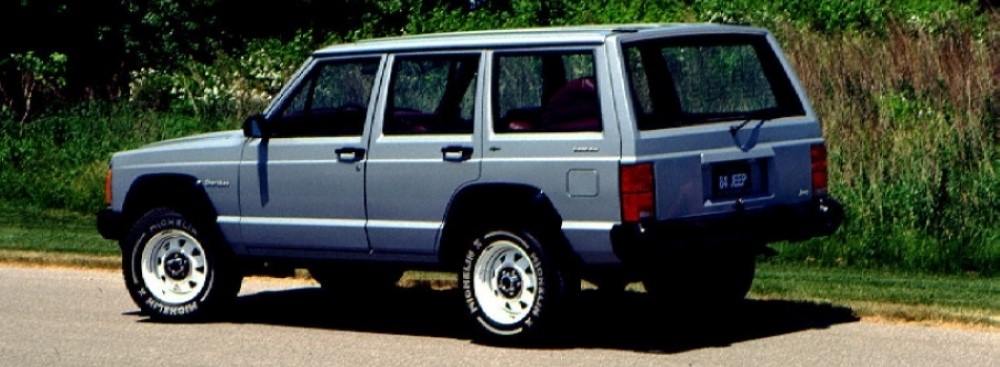
Jeep Cherokee (SJ: 1974 – 1983)
First generation
- The Jeep Cherokee debuted in 1974, and was based on the Jeep Wagoneer SJ platform.
The original Cherokee was marketed as the sporty two-door version of the popular Jeep Wagoneer. The Cherokee remained a two-door sport-utility (SUV) until 1977 when a four-door version was introduced. Jeep produced 197,338 SJ platform Cherokee models between 1974 and 1983.
In 1974, the first Cherokee model is produced. This two-door off-road vehicle was based on the Wagoneer, without offering all premium features of that model. The two-door Cherokee was aimed at a younger demographic than the Wagoneer and was built for the growing recreational vehicle market.
It featured a Gladiator grill and had several tape stripe and bright color combinations. It was marketed as an off-road vehicle more than the Wagoneer


Jeep Cherokee (XJ: 1984-2001)
Second generation
- Major redesign in 1984 saw the Jeep Cherokee reintroduced as a smaller, more advanced sport-utility vehicle (SUV), effectively inventing the modern SUV
- More than 2.5 million Cherokee models sold worldwide between 1974 and 2001
- Top sales year was 1999 with more than 200,000 units sold worldwide
In 1984, American Motors Corporation invested $250 million to redesign the Jeep Cherokee as a smaller, more advanced SUV based on the all-new Jeep XJ platform. The 1984 Jeep Cherokee was a revolutionary vehicle — 21 inches shorter, 6 inches narrower, 4 inches lower, and a thousand pounds lighter than the full-size Wagoneer (SJ). It was built on a revolutionary unibody platform instead of a traditional chassis-and-frame. The Cherokee continued to be available as both two- and four-door models until 1988.
A next major step in the evolution of the Jeep SUV came with the launch of the second generation of Cherokee in 1984. With this model, that was the first SUV with a uni body, the Jeep brand introduced a further revolution in the market and created the new category of the compact SUVs. The XJs used a new “Quadra-Link” front suspension to retain the durability of a solid front axle while improving handling and ride, and robotic assembly to improve fit and finish. A half-ton lighter than the old Cherokee, four inches lower (10 cm), six inches (15 cm) narrower and an incredible 21 (53 cm) inches shorter, the XJs had 90 percent of the old Cherokee’s capacity. Available with two 2WD/4WD systems — SelecTrac and shift-on-the-fly CommandTrac and four doors — Cherokee dominated its market segment for years.
The Jeep Cherokee (XJ) was the first vehicle with two available 4×4 systems: Command-Trac part-time and Selec-Trac full-time 4×4. Jeep Cherokee XJ models have proven enduringly popular with 4×4 enthusiasts for their off-road capability and wide availability of aftermarket modifications.
Cherokee Limited debuted in 1988 and a 4.0-liter I-6 was introduced in 1989.
Sales of the Jeep Cherokee soared after the 1984 redesign with more than 100,000 units sold worldwide every year from 1986 through 2001. In 2002, Cherokee was replaced by the Jeep Liberty in North America. The Cherokee had its best sales year in 1999, with more than 200,000 units sold worldwide.




You must be logged in to post a comment.